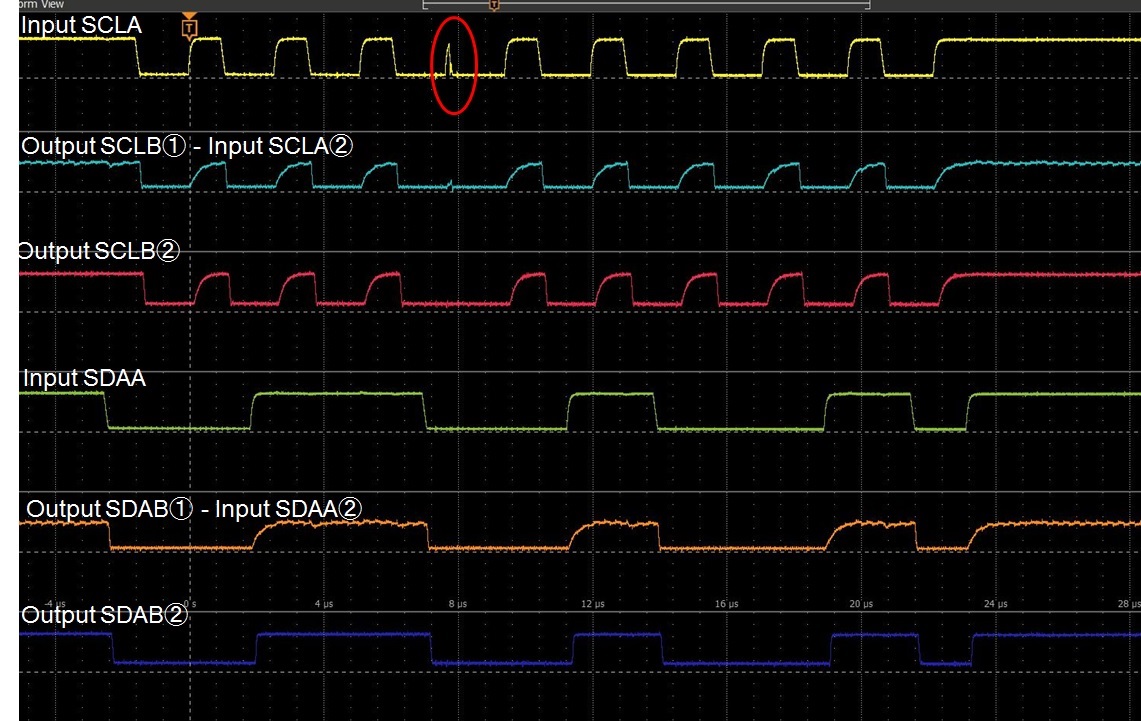Other Parts Discussed in Thread: TCA9617B
Hi Team
Customers are using the configuration for TCA9517A shown below.
In that case, the waveform is as follows.
Input CLK is not input correctly. There may be a problem on the Master side.
But when using TCA9617B in the same configuration, the waveform was normal.
Do you know the cause? Are the input and output pull-up resistors appropriate?
The customer is in trouble and is rushing to find out the cause.
We need your support.
Best Regards,
Ishiwata




